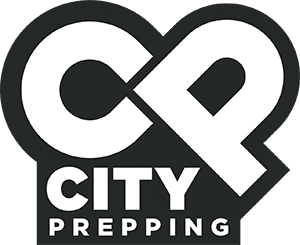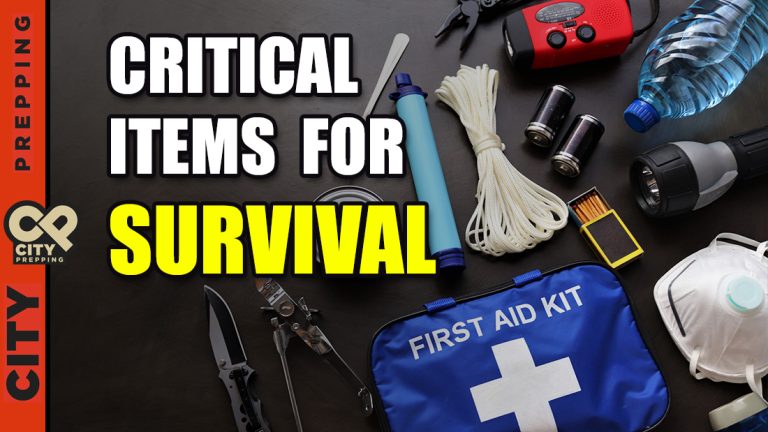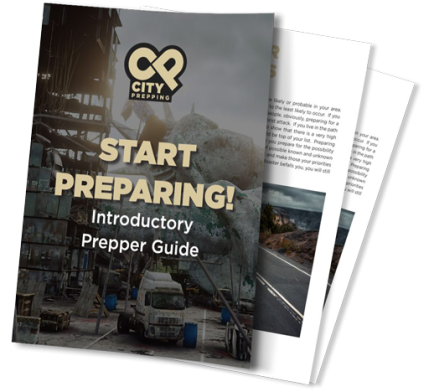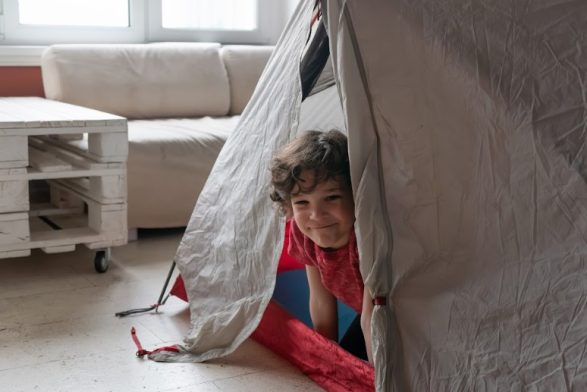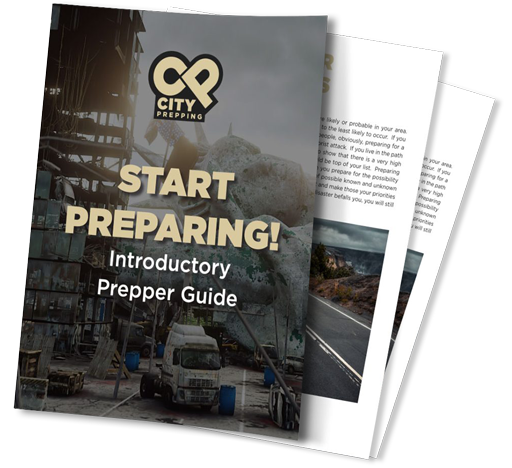- Checklist printed on paper. You can download it here.
- Local map: https://amzn.to/3bKsucQ
- Fire extinguisher next to the kit: https://amzn.to/2RCsDbp
- Water next to the kit: https://amzn.to/2Sjp8Xd
- BIC lighter (be careful not to light in the house): https://amzn.to/2RtjfXH
- Cash (small denominations)
- Flashlight: https://amzn.to/3454hcZ
- Extra batteries for the flashlight. Put these in a ziplock bag and rubber band them to the flashlight.
- Trauma Pak
- Tourniquet: https://amzn.to/2QKqslO
- Guazes: https://amzn.to/3u6royl
- Israeli bandage: https://amzn.to/3oDgOxA
- Put rubber bands around these and put them at the top.
- Crescent wrench and pliers to shut off utilities.
- Gloves: https://amzn.to/3bKtjCs
- First aid kit
- ACE bandage: https://amzn.to/3f4G5h7
- Non-prescription medications such as pain relievers, anti-diarrhea medication, antacids, or laxatives.
- Quick clot: https://amzn.to/3wq13gl
- Prescription meds
- Battery-powered or hand-crank radio and an NOAA Weather Radio with tone alert that has a built-in flashlight. These also have a USB charger that you can use to keep your cell phone charged. Be sure to have the cords for your phones with this kit: https://amzn.to/3faIMOp
- Whistle (to signal for help): https://amzn.to/349KNnm
- Hand sanitizer: https://amzn.to/3woYdbh
- Soap: https://amzn.to/2QFoZNr
- N95 dust masks: https://amzn.to/3yrpCv8
- Matches (be careful not to light in the house)
- Small pry bar: https://amzn.to/3ucvxRk
- Plastic sheeting
- Duct Tape: https://amzn.to/3bLmJvw
- Moist towelettes, garbage bags, and plastic ties (for personal sanitation)
- Manual can opener (for food): https://amzn.to/2RuUjiA
- Old prescription eyeglasses for backups
- Pet food
- Feminine supplies and personal hygiene items
- Mess kits, paper cups, plates, paper towels, and plastic utensils
- Books, games, puzzles, or other activities for children
- Water filter – mini sawyer: https://amzn.to/3vbNJMb
- Knife: https://amzn.to/3yuvR1h
- Water: https://amzn.to/2PUP9eZ
- Food
- Food that is easy to prepare without fuel or a need to cook
- High-calorie bars: https://amzn.to/3oHZEir
- Trail mix
- Ready-to-eat canned meats, fruits, vegetables, and a can opener
- Dry cereal or granola
- Peanut butter
- Canned fruit
- Non-perishable pasteurized milk
- Comfort/stress foods
- You can download it here.
- Put on heavy boots as you may be walking through broken glass or other debris.
- If you are able to safely move to exit the house or building and there is an open space to go to, exit and avoid damaged areas and downed power lines.
- Aftershocks can happen, so be ready to drop, cover, and hold on whenever you feel shaking.
- Check for injuries. Render first aid. Do not move seriously injured victims unless they are in immediate danger.
- Avoid making calls if possible as the lines will be overloaded with emergency calls. Text if possible to alert others that you are safe. If there is an emergency, make a call.
- Check for other hazards and control them (fire, chemical spills, toxic fumes, gas leaks, and possible collapse).
- Check utilities (water, gas, electric). If there is damage, turn the utility off at the source. In an emergency, your gas can be turned off at the main gas service shutoff valve. Do not shut off the gas unless you smell gas, hear gas escaping, see a broken gas line or suspect a gas leak. If you turn off electricity, shut off each breaker one-by-one and then the main breaker.
- Inspect your dwelling for observable cracks and damage, including roof, chimneys, and foundation.
- Review your food and water supplies.
- Remember! Emergency water can be obtained from water heaters, melted ice cubes, canned vegetables, and toilet tanks.
- Never use matches, lighters, or candles inside.
- Turn on the radio and listen for emergency broadcasts/announcements, news reports, and instructions. Cooperate with public safety officials.
- Do not use your vehicle unless there is an emergency. Keep the streets clear for emergency vehicles.
- If your home or building is potentially unstable, set up your shelter area away from damage.
- Check on your neighbors and help where possible.
- Be prepared for aftershocks.
- Begin preparing to potentially evacuate if additional earthquakes leave your area uninhabitable. Leave written messages behind for family and rescue workers.
- Use gloves, wear heavy shoes, and have adequate and appropriate clothing available.
- List important phone numbers on this paper.
